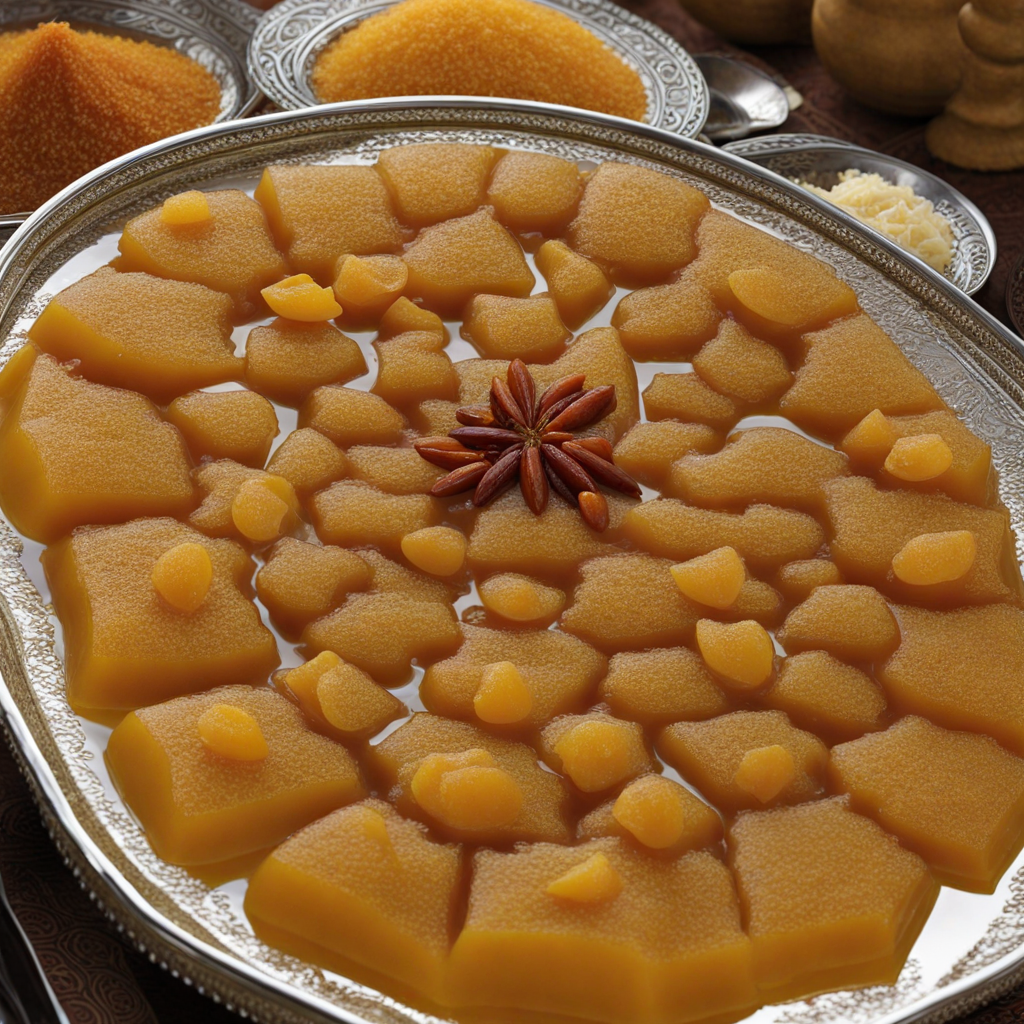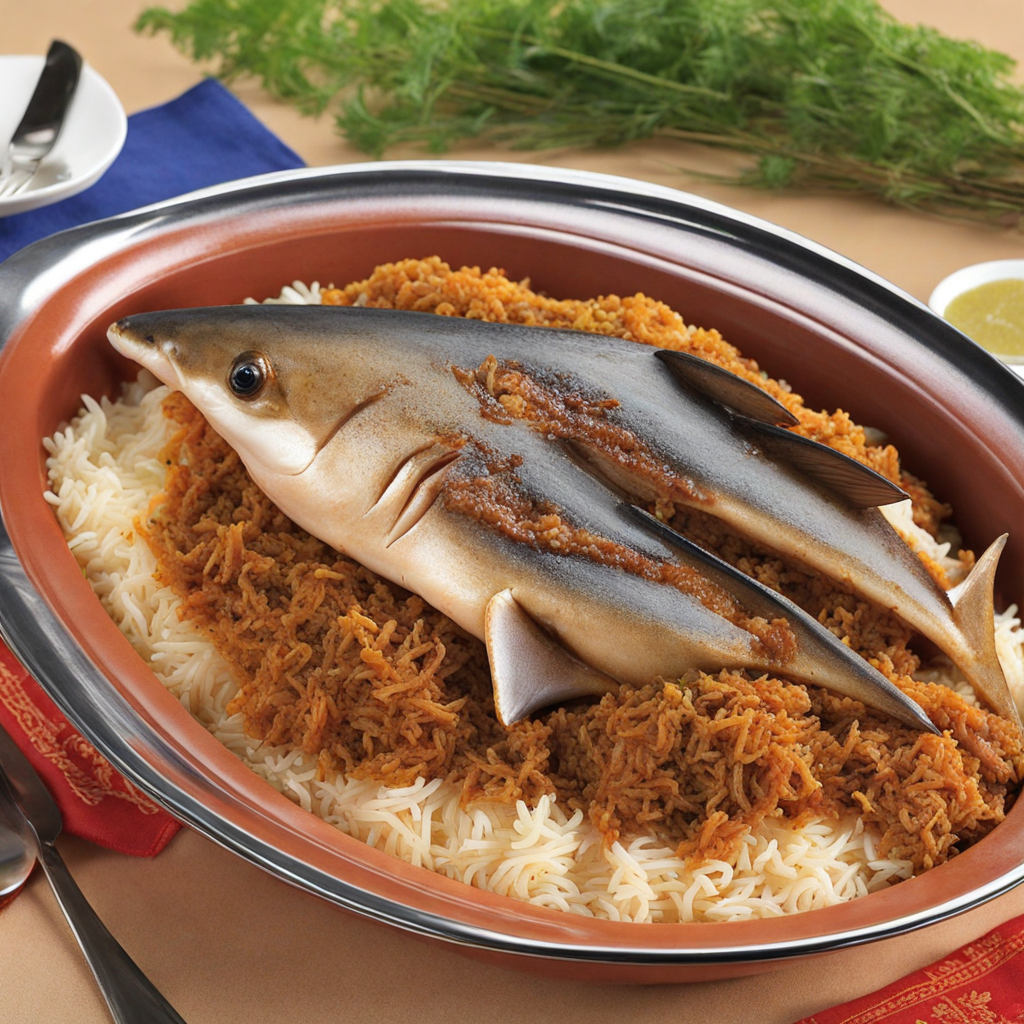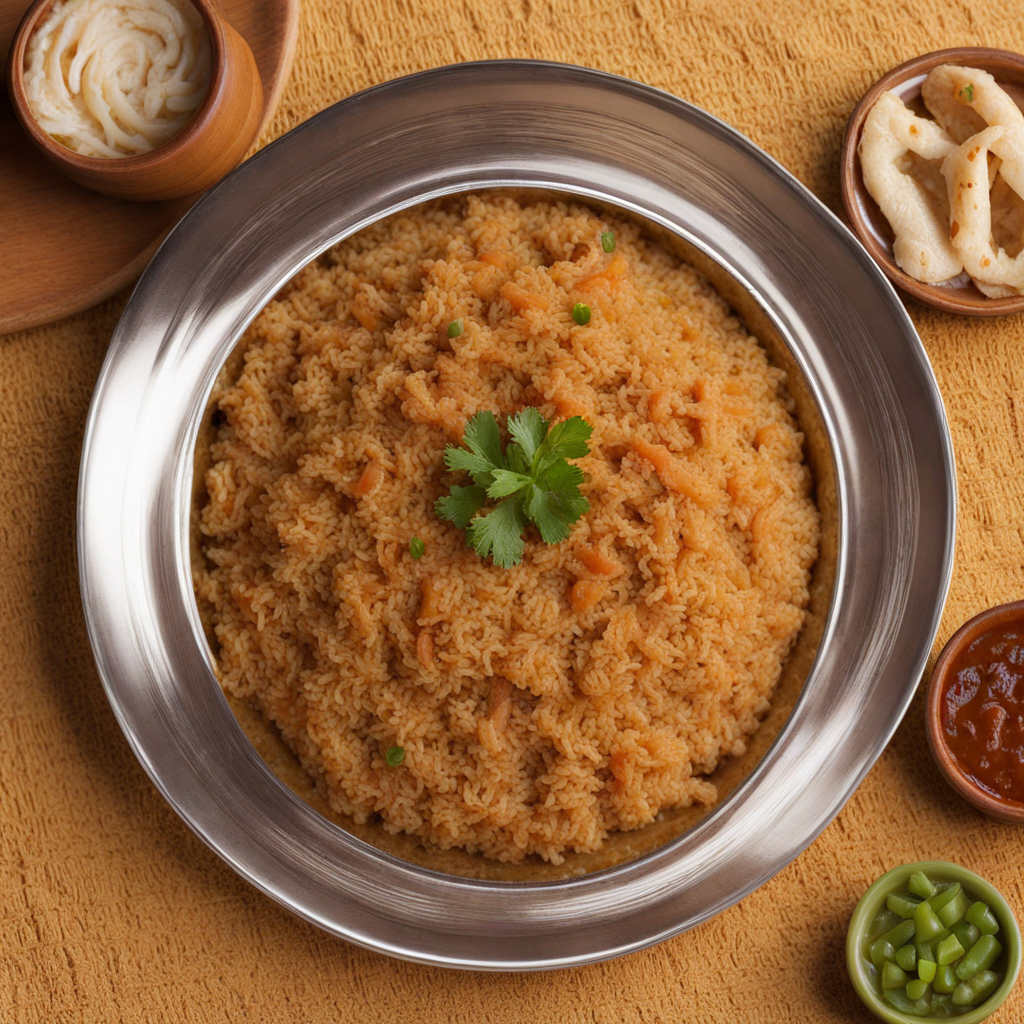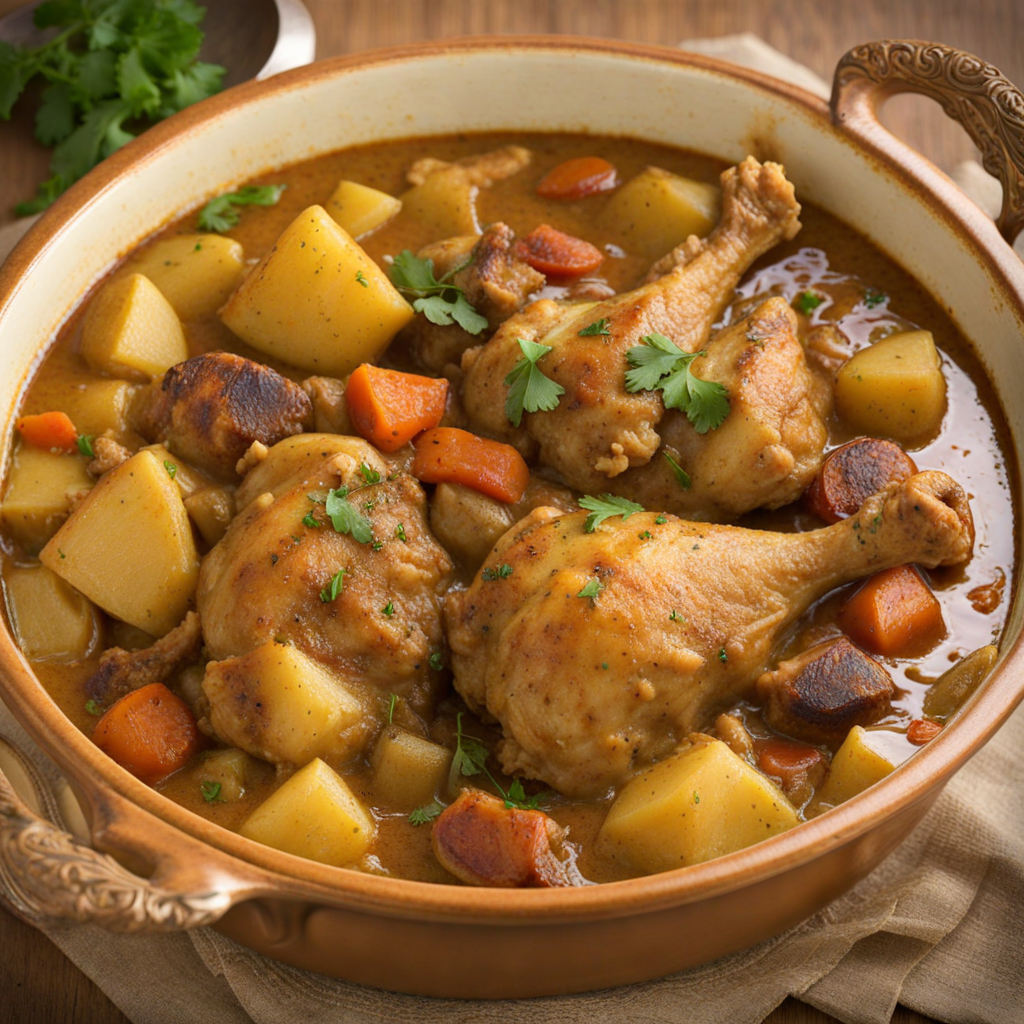Halwa
Halwa from Oman is a traditional sweet dish that offers a delightful explosion of flavors and textures. This aromatic treat is made from a blend of semolina, sugar, ghee, and a medley of spices such as cardamom and saffron, which infuse it with a warm, rich fragrance. The semolina is toasted to a golden hue, giving the halwa its unique nutty flavor, while the sugar melts into a syrup that binds all the ingredients together. The addition of nuts, such as almonds and pistachios, adds a delightful crunch, contrasting beautifully with the soft, melt-in-your-mouth texture of the halwa itself. What sets Omani Halwa apart from other variations is its subtle complexity; the infusion of rosewater or orange blossom elevates the dish, providing an aromatic quality that dances on the palate. Each bite is a blend of sweetness and warmth, with the spices gently warming your senses. Often served during special occasions, this halwa is typically cut into diamond or square-shaped pieces, making it visually appealing as well as delicious. It’s not just a dessert but a symbol of hospitality, often enjoyed with Arabic coffee during gatherings and celebrations. Omani Halwa is more than just a treat; it’s a cultural experience that reflects the rich heritage of Oman. The preparation of halwa is often a communal activity, bringing families together to share in the joy of cooking. The dish is usually served on a decorative platter, inviting guests to indulge in its sweetness. Whether enjoyed on its own or paired with a cup of strong coffee, Omani Halwa is a must-try for anyone looking to explore new tastes and experience the warmth of Omani hospitality.
How It Became This Dish
The Sweet History of حلوى (Halwa) in Oman In the heart of the Arabian Peninsula, Oman boasts a rich tapestry of cultural history and culinary traditions, none more emblematic than its beloved sweet, حلوى (halwa). This delectable confection has transcended mere taste; it is a symbol of Omani hospitality, heritage, and identity, deeply intertwined with the nation’s culture and history. #### Origins of حلوى The origins of حلوى can be traced back to the ancient trade routes that connected the Arabian Peninsula to the broader Middle East and beyond. Oman, with its strategic location, became a melting pot of cultures, ideas, and culinary practices. Early references to similar sweets can be found in Persian and Indian cuisines, where sugar and spices created complex flavors that would eventually influence Omani halwa. The word "halwa," derived from the Arabic term for "sweet," broadly encompasses a variety of desserts across the Arab world. However, Omani halwa has developed a unique identity. It is believed that the sweet emerged during the 19th century, when the Sultanate of Oman was flourishing and trade was at its height. The infusion of spices such as cardamom, saffron, and rosewater, along with the use of local ingredients like dates and nuts, set Omani halwa apart from its counterparts. #### Cultural Significance In Oman, حلوى is much more than just a dessert; it is a vital part of the social fabric and cultural identity. Traditionally, it is served during significant occasions, including weddings, festivals, and religious celebrations. The preparation of halwa is often a communal activity, bringing families and friends together to share in the joy of cooking and, later, feasting. Serving halwa is a gesture of hospitality. When guests arrive, it is customary to offer them a plate of halwa accompanied by Arabic coffee (qahwa). This ritual symbolizes welcome and respect, reflecting the deeply ingrained Omani values of generosity and community. The presentation, often adorned with colorful nuts and dried fruits, adds to the aesthetic appeal of the dish, making it not only delicious but also a feast for the eyes. #### Ingredients and Preparation Omani halwa's rich flavor profile comes from a harmonious blend of ingredients. The base is made from semolina flour, sugar, and ghee (clarified butter), which are cooked together until the mixture thickens. Spices such as cardamom, saffron, and nutmeg are then added, imbuing the sweet with aromatic complexity. The mixture is often enriched with a variety of nuts, including almonds and pistachios, as well as dried fruits like raisins and apricots. The preparation of halwa is an artisanal process. Traditionally, it is cooked in large copper pots over an open flame, allowing for precise control of temperature and texture. The stirring requires skill and patience, as the mixture must be constantly monitored to achieve the desired consistency. Once ready, the halwa is poured into molds, cooled, and cut into squares or diamonds for serving. #### Evolution through Time The evolution of Omani halwa reflects broader changes in Omani society. In the early 20th century, the sweet was primarily enjoyed by the elite and served during royal gatherings. However, as Oman modernized and tourism increased, halwa transitioned from a luxury item to a popular treat enjoyed by all strata of society. Today, it is not uncommon to find halwa in markets, cafes, and homes across the country. The globalization of food culture has also impacted halwa's production and consumption. While traditional recipes remain cherished, modern variations have emerged, incorporating new flavors and innovative techniques. For example, some contemporary bakers have started using chocolate or exotic fruits, creating fusion versions that appeal to younger generations. Despite these changes, the core of Omani halwa remains intact. Many families still adhere to traditional recipes passed down through generations, emphasizing the importance of heritage in the culinary landscape. The annual Halwa Festival in Muscat celebrates this sweet tradition, where bakers showcase their skills and compete for the title of best halwa maker, reinforcing the community’s connection to its culinary roots. #### Halwa in the Global Context As Oman has gained visibility on the global stage, so too has its halwa. The sweet has piqued the interest of culinary enthusiasts and tourists, contributing to the growing appreciation for Omani cuisine. Restaurants and food festivals abroad have introduced halwa to international palates, allowing people from diverse backgrounds to experience this unique aspect of Omani culture. Moreover, the availability of Omani halwa in international markets highlights the increasing demand for authentic culinary experiences. Specialty shops in various countries now offer halal versions of halwa, enabling a broader audience to engage with this traditional sweet. #### Conclusion The story of حلوى in Oman is a rich narrative of tradition, community, and cultural significance. From its origins in the bustling trade routes of antiquity to its status as an emblem of Omani hospitality, halwa has evolved while remaining steadfastly rooted in the nation’s identity. It serves as a reminder of the importance of food in fostering connections, celebrating heritage, and expressing generosity. As Oman continues to navigate the complexities of modernization, its halwa remains a sweet symbol of the past, present, and future, embodying a culture that cherishes its traditions while embracing change. Every bite of Omani halwa tells a story—a story of the land, its people, and the enduring spirit of hospitality that defines this beautiful nation. Whether enjoyed in a bustling market, at a family gathering, or as a treat shared with friends, حلوى is not just food; it is a celebration of Omani life itself.
You may like
Discover local flavors from Oman







